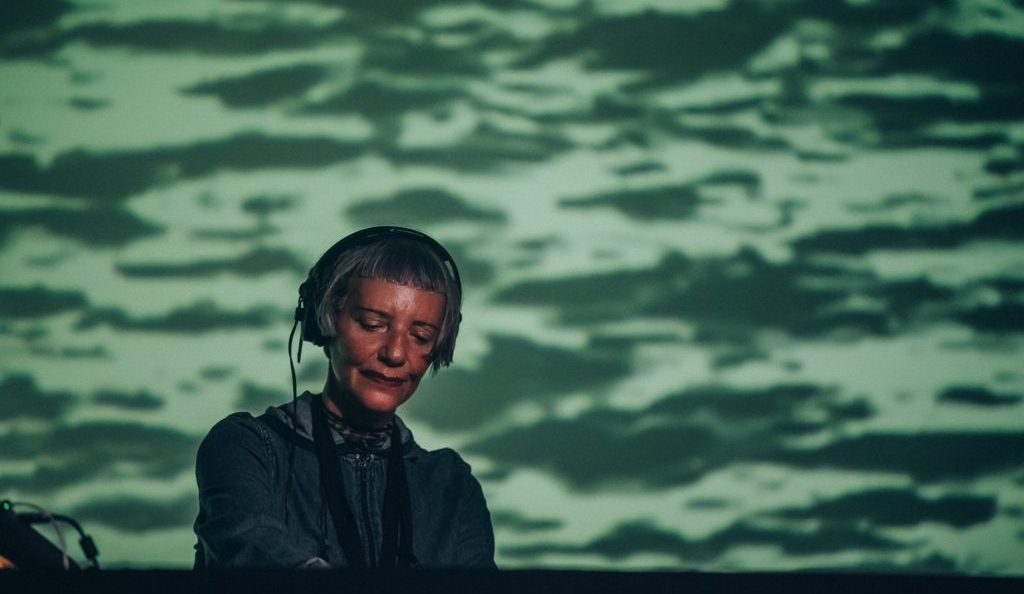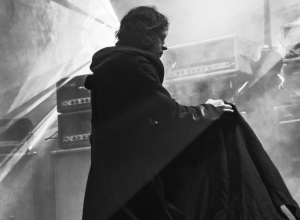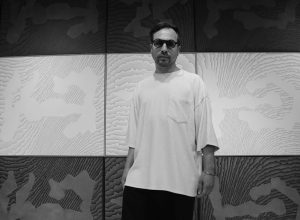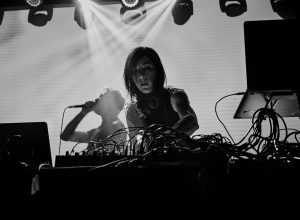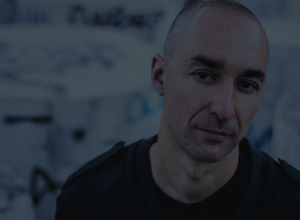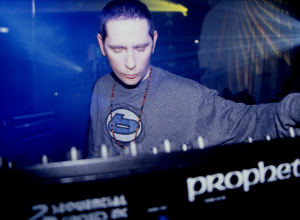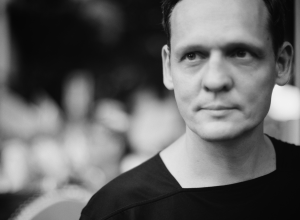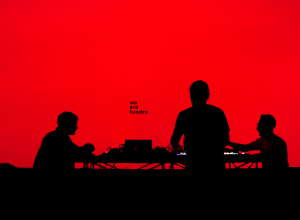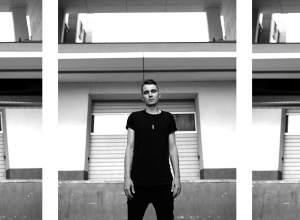Behind sound developer, composer and DJ Cio D’Or is the story of a forever young artist, a beautiful soul, spending most of her time at the service of music. Beloved by her peers, she has belonged to countless groups of friends and communities. In such a lifestyle, she has developed high social skills which lead her to make decisions from the heart more than from reason in most domains of her life—private, professional and artistic. Touching, from the way she interacts with others to her natural romanticism and elegance, she shows high empathy toward others, which establishes an instant connection. Her attentive nature allows her to carry on any conversation with a certain ease to go deep, while making those around her feel important and protected.
Cio D’Or’s social qualities can be sensed in her music, yet enriched by a whole creative world. Designer of an instantly recognizable sound, she produces warm and deep complex structures, constantly on a fence between light and dark cliffs, noises and silences, cinematic settings and authentic presence. Part of a family of intricated sounds brought by artists such as Aleksi Perälä, Alva Noto, and Ryuichi Sakamoto, she’s a high representative of the minimal movement. She honors painter and pioneer Frank Stella’s quote “The aim of art is to create space,” she does through deep refined electronic music compositions and stripped piano pieces, delicate yet substantial.
Intriguing and engaging, her musical minimalism invites the listeners to bridge gaps with their thoughts, making them active in the artistic process and, therefore, contributing to the immersive effect. The mental activity is yet effortless for them: minimalism allows a focus on the essentials, by eliminating the dispensable sonic excesses and by creating space. Such a process brings mental freedom to the listeners, by breaking through the wall that a too-dense track would normally build. On the contrary, Cio D’Or’s music is open, and inviting, with an exquisite balance between artistic depth and hopeful, melancholic intelligence.
Involving the listener in her sonic journey is totally intentional for Cio D’Or. Through her musical language, she may for instance also convey ecological messages at times, in need to be transmitted and received. However, they consist of sounds and not of words; therefore, the more active the listener is in the musical process, the more efficient the communication becomes. For instance, water, as a resource, is one of the topics exploited by Cio D’Or in some of her releases, such as in Magnetfluss EP and Polar Q, which not only expresses her will to raise awareness of the value of the blue gold, but also serves as a starting point for her creativity. The German artist makes music first and foremost because she has something to share, which can for instance be a cause to defend or an environmental and societal drama to denounce. Then, the photos and videos that she often attaches to her pieces are additional, reinforcing means of expression to communicate what moves her, what she loves, what she criticizes, and what astonishes or saddens her. In the end, the experimental touch is at the service of what she wants to say and not the other way around.
As a result, her music is very cinematic: if this aspect is strongly influenced by the visual language of Jean-Luc Godard and Françoise Truffaut, as well as by nature documentaries and films taking place in the cosmos, it’s also due to the intensity of the message that she tries to convey.
Behind the cinematic side, there is also a natural will to bring life to the music, as illustrated in this anecdote shared with us: “In 2009, Mike Parker and I performed at a venue in Tokyo which got introduced by a local DJ who was playing ambient music only. I was fascinated by how receptive the Japanese audience was to such deepness and the night pleased me a lot: I followed up very slowly and when the first kicks and hi-hats hit the floor, people totally freaked. For my ears and from my experience in modern dance, such a build-up was far more interesting than when exclusively following a classic four-to-the-floor techno pattern. Thus I can also convey new musical ideas from artists or bring classical compositions to mind at the beginning or end.”
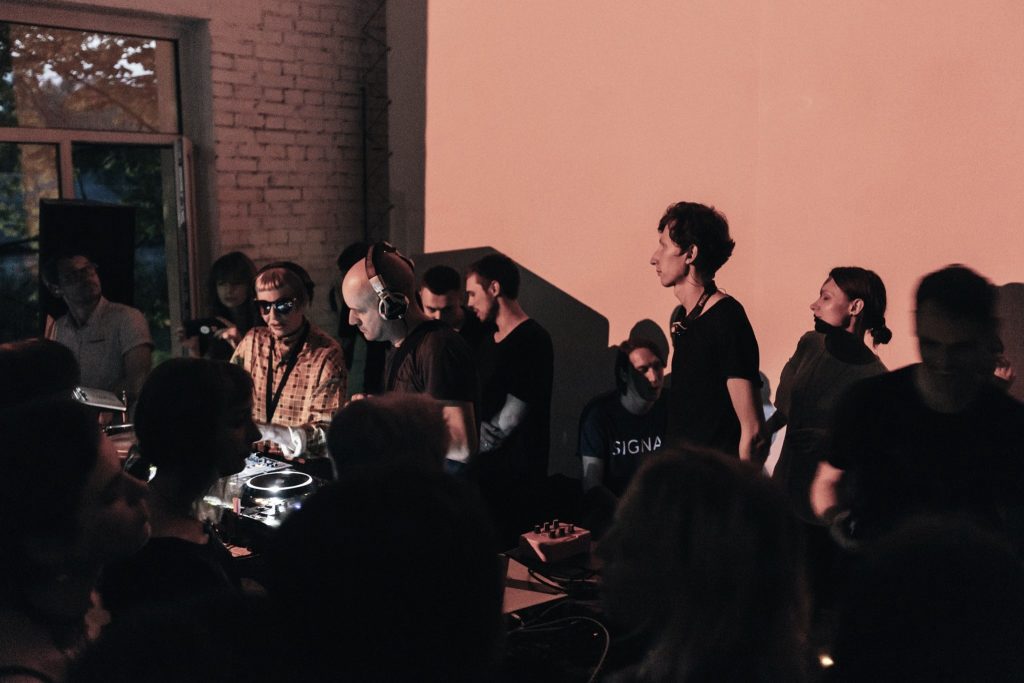
Such an anecdote is at the heart of Cio D’Or’s music, creative and meaningful. Next to such motives, it is worth looking back to her past to understand better the sources of her talent and convictions, including why she’s often among the favorite artists of deep techno lovers. It is a journey into a world of freedom, taking various meanings over the years, from times familiar to the previous generation, less to the digital natives, up until today.
Our first stop takes place in the 1970s: while the leftist movement was on the rise in Europe, another one emerged with a similar goal, to turn away from consumerism. The young Cio D’Or became a hippie because she was challenging materialism. She adopted the community spirit inherent to the movement, including its anti-commercial values, its chill-out moods and its social marginalization. Like often with her, the connection became quickly musical: “During my time as a hippie, I had friends who were playing various percussions and I was playing with them intuitively in the beginning, without having learned the instrument. I had at least some natural rhythms in me thanks to dance, which I started at the age of four or five years old and which took an important place in my life. After some more technical practice, a free Jazz band was founded and I played congas and kalimbas for it for a while. We recorded some tapes: it was pretty wild,” she smiles.
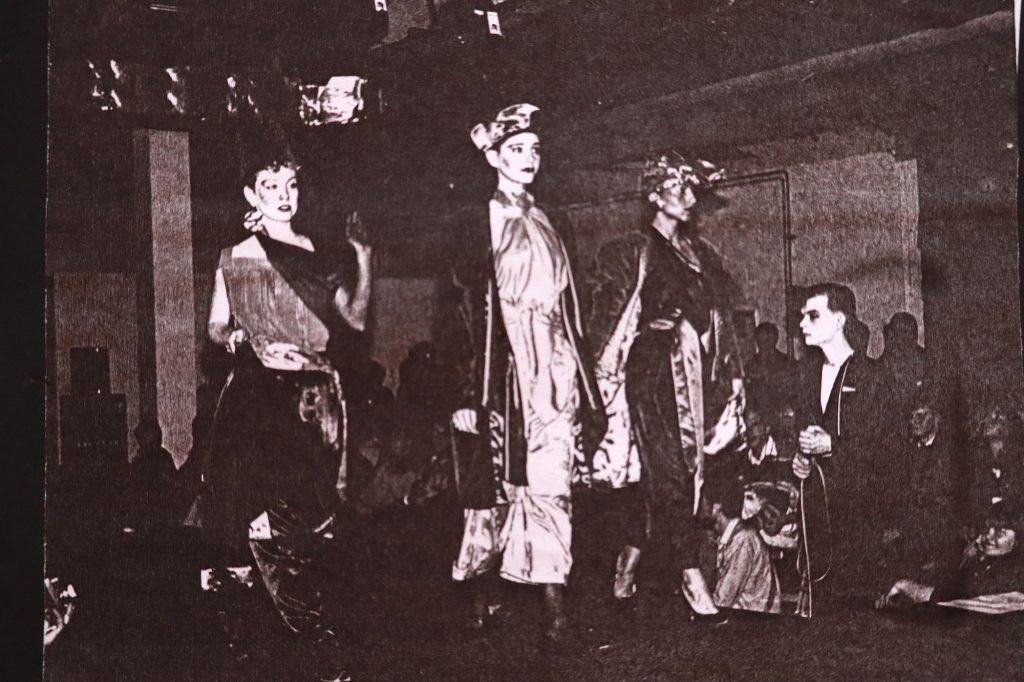
If Donato Dozzy took the production path after having found an interest in adding some musical layers on top of his DJ mixes, a similar process in Cio D’Or’s mind has been at work, as she develops: “Outside of the percussions, I’ve also learned to play a little bit of xylophone, piano and guitar, but individual instruments were not satisfying for me, because I always had ideas of whole compositions in my mind. At that time I still had a kind of music-choreographic way of thinking, which I enriched with music-theoretical and technical knowledge in the course of my musical life. With that, it was certain that at one point, I would start ‘layering music.’ Today, even when I only play the piano, I create various layers of notes that I mix together to form one piece, whose complexity requires a particularly skilled piano player to interpret the whole rendering at once. As such, I feel honored that pianist Denys Proshayev dared to premiere three of my pieces at a classical festival in Denmark.”
A symphonic mindset, layering sounds, only one ingredient is missing: the first contact with electronic music…
Cio D’Or remembers: “My passion for dance led me to develop some choreography. While The Jackson Five was getting popular on the radio, I was more attracted to two newcomers at that time, Brian Eno and David Byrne. They represented my first connection to electronic music and I found their music a perfect match for my choreographies. Dancing became so important to me that around 1982, I gave up a career as a gymnastics teacher to study Martha Graham Modern Dance and Ballet at the Etage in Berlin. At that time, there were a lot of artistic opportunities in the capital city, which resembled a walled-in island with many artists and conscientious objectors among the population. Having no more regular job, I took care of an elderly lady for a while and modeled alongside dance classes to pay for a 30-square-meter apartment that I rented for almost nothing. A recruiter for Rosa von Praunheim’s film Anita: Dances of Vice took notice of me and after a dance casting, I received an offer for the second role, but a familial drama led me to leave Berlin. I moved to Munich with my boyfriend at that time.”
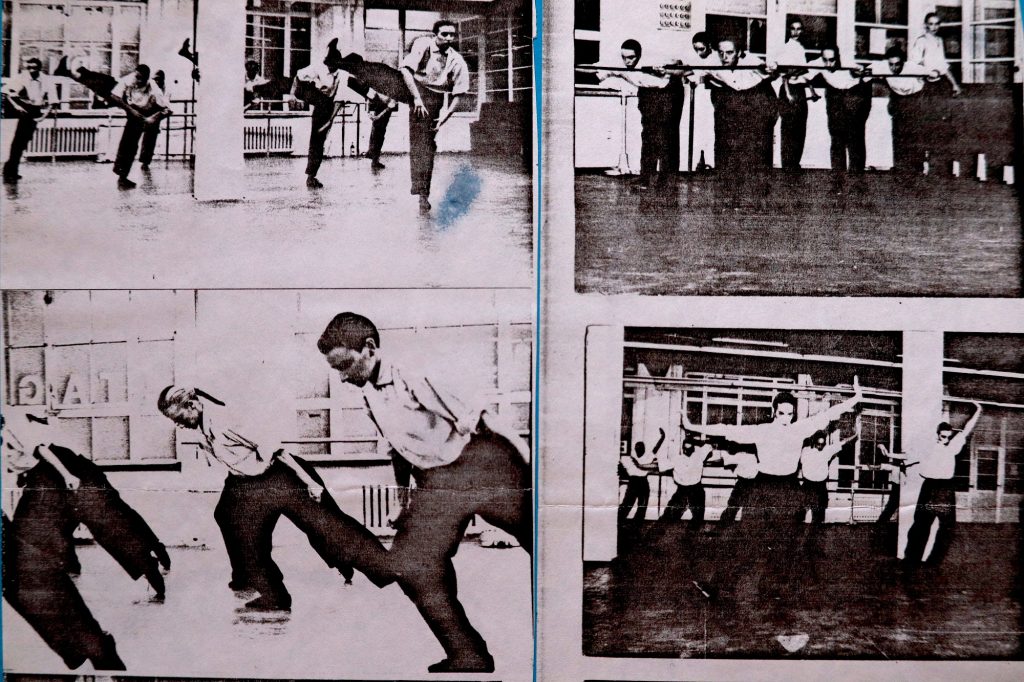
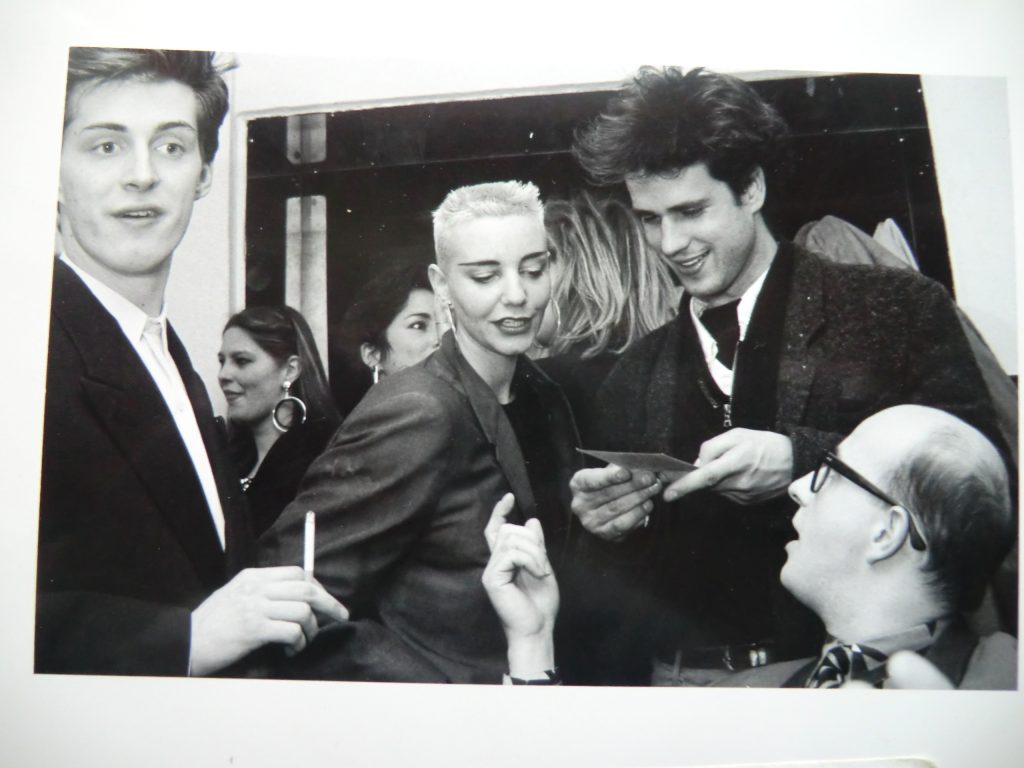
Giving up on a stable career to follow her passion in Berlin says a lot about how Cio D’Or puts her heart above financial comfort, and the anecdote also shows the world she was becoming more and more artistically immersed. Surrounded by musicians in Munich, and after having built a more stable life in the southern city, she ended up buying turntables, encouraged by her friends. It hasn’t been such an easy choice, as she unveils: “I was 39 years old by then, an age at which DJs usually stop. But music knows no age, gender, origin, or skin color, and after a long search for the right path in life, DJing has been a calling. Dance requires a lot of discipline and I knew that even difficult situations are good for development. Finally, I bought a couple of 1210 turntables. From that moment on, time stopped, I canceled several appointments and learned to mix vinyl for about two years. The process has some similarities to learning an instrument, but it’s also about dramaturgy and harmony. I spent a lot of time in record shops and at home to perfect vinyl beat-mixing and build-up sets. I started playing first ambient and then house music in bars and was invited to play techno in Ultrashall, where I became a resident. I accepted to play every two months, as there were not enough suitable records in a short amount of time for new sets, while the audience deserved proper musical care.”
It’s in the legendary club of Munich that Cio D’Or refined her style. She played house music at first, but finding it too slow, she started to mix techno and drum and bass. With a background in ambient music, she opted for the deep abstract genre, in the spirit of what Heiko Laux was producing on his label Kanzleramt from 1998 to 2002, or Richard Bartz on his defunct project Kurbel.
After six months of preparation, Cio D’Or performed her first live techno mix at a private party when a surprise guest welcomed her: “It was around 2000,” she says, “Richard Bartz in person introduced himself during my mix and then came at the end of it to discuss. He was collaborating with Heiko Laux and Sven Väth at that time and was interested in my musical approach, which was very exciting. He gave me the opportunity to play on big stages during his Kurbeltour, including in Ostgut, which is now Berghain. The whole experience has been fascinating and formative for me.”
Through the pursuit of new artists and the purchase of many records, Cio D’Or finally came to the production path. She explains: “My desire to produce arose because I couldn’t find the sound I was searching for in the record shops. Music friends and I discussed this disappointment and they encouraged me to develop that sound myself. I bought the MPC2000 sampler and took some holidays in Sinai with the Beduins, reading the manual twice to understand it, capturing underwater, camel, street sounds, and snorkeling in between. Back home, I built a first track, but it was incomplete, so I pushed the doors of studios I got connected with and requested some help to achieve my ideas. Three tracks came out but I wasn’t delighted. A friend in film scoring advised me to buy a Mac Titanium and Reason, which I did. I took then other holidays in Formentera in a house that I rented from the family of Ellen Allien, read twice the software’s manual, ate good food, and of course, snorkeled in between…”
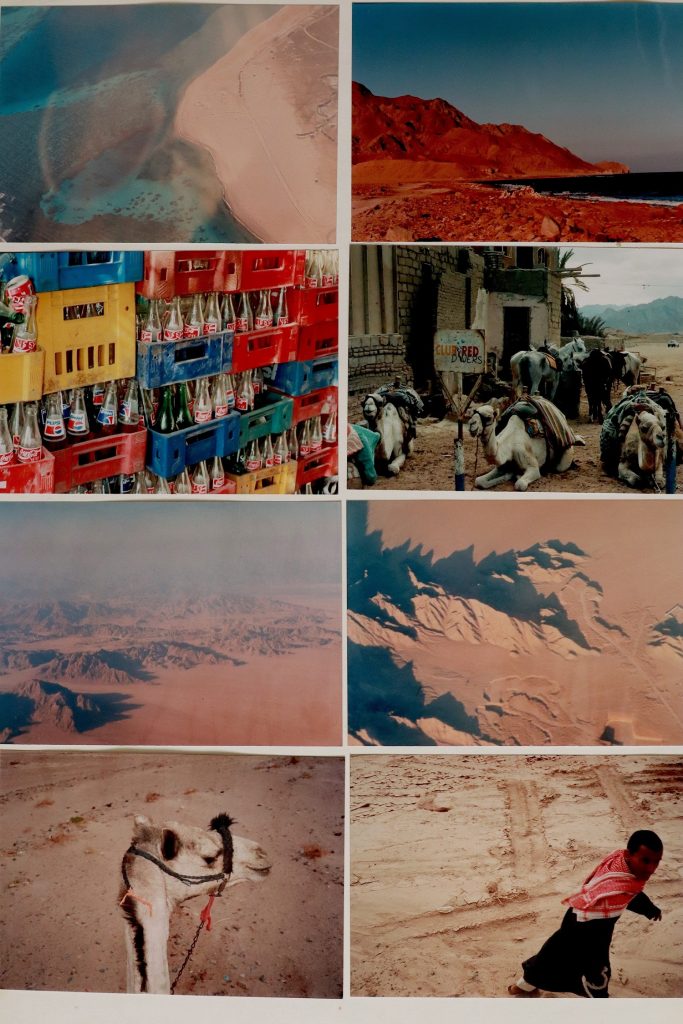
With her experience on the percussions and piano, it was obvious that Cio D’Or would go for an analog-type of technical setup, which explains the choice of the sampler and then, later, Reason, digital yet very close to the studio sensations she was looking for. She comments: “Reason resembled a studio: Through certain cablings, it is possible to develop unique sounds, but it takes patience, time and a lot of research.I did everything I could to make the sequencer sound as analog as possible and worked on individual sounds so intensively that they didn’t feel too static. Music lovers with expensive analog equipment smiled at me at the beginning, but I wanted to prove to the techno world that it is possible to make tracks resonate with less expensive equipment. I created certain sounds with the help of Zoom Recorder and following processing. The idea, patience and continuity in the realization is what matters: with such words, I would like to encourage all people: It doesn’t take a lot of money to create music!”
It was time to play the first tracks to music enthusiasts: At a New Year private party where she played her own music for the first time, her friends reported that her tracks “were cool but lacking a bassline.” So she set to work and developed various kinds of basslines. Richard Bartz added two essential statements that impacted her techno production: “If you make sure that the kick and the bassline fit together well, then your track is almost finished” and “Create a dialogue in your tracks.”
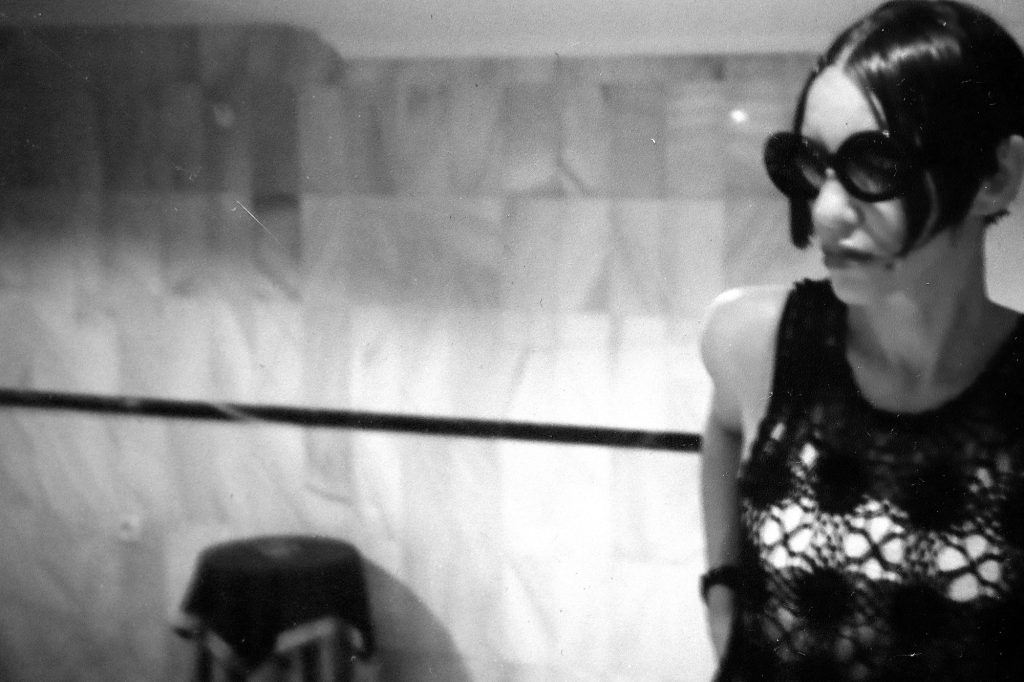
Research, original ideas, reason, and great tips from great musicians finally allowed her to compose the tracks she wanted and it was time to contact labels. Thanks to her network, she released a first single in 2004 on Treibstoff, deep, jazzy, with leftover house influences, followed by a punchier EP in 2006 on Karmarouge, co-owned by her friend Gabriel Ananda. Both labels being in Cologne, she ended up moving permanently to the city.
Cio D’Or was more and more fascinated by brilliant, reduced sounds. She was also missing some building elements for this genre in her mixes. This is how Kimono came out in 2007 on Motoguzzi Records. Since she played Paul Brtschitsch’s records several times in her sets and the two of them also got along well as persons, they produced the record Aroma together on Broque in 2008. Later, Cio D’Or thanked Donato Dozzy by e-mail for his tracks, which gave rise to the idea of producing a collaborative record: Menta came out in 2009 on Time To Express.
She remembers: “Donato and I worked for about one week in his amazing studio in San Felice Circeo to produce ‘Menta.’ It was also an opportunity to enjoy his equally marvelous cooking skills,” she smiles, before continuing: “Moreover, the environment around Donato’s place was a dream full of lime trees and other fascinating plants; a gorgeous, real week spent together.” Later she returned the favour and cooked for Dozzy and Neel in her kitchen in Cologne before a gig at the Artheater.
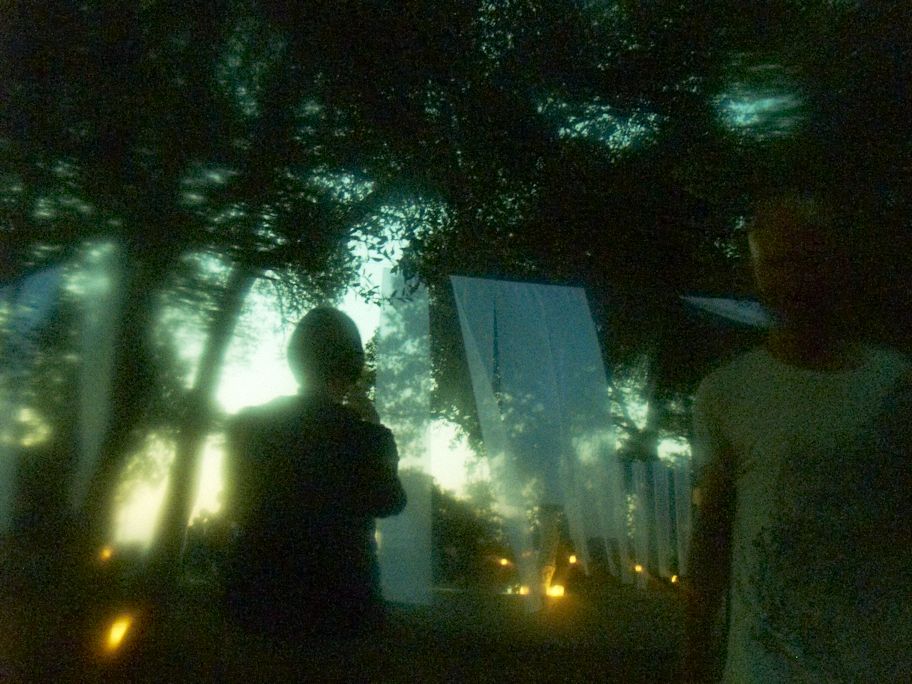
In those years, a label owner from Munich, formerly of Treibsand Recordings, wrote her to get some music for his newly-born label: a certain Tom Bonaty from Prologue.
She initially declined due to time constraints, but while creating her first album, Die Faser, she thought of him and sent him the project in 2009. It laid one of the foundations of her sound signature, deep and minimal; an increase in tonal maturity from what she previously recorded. Her Magnetfluss EP and remixes followed later in 2011.
Cio D’Or saw in Bonaty his unconditional love and commitment for deep techno, which touched her, and in his nascent project, the possibility to contribute to its conception, as she had also on her side harbored dreams of owning a label. The legendary Prologue is the result of Bonaty being in charge of the artists and repertoire, and, more modestly, Cio D’Or suggesting some fresh ideas, accompanied by what became later a family of artists.
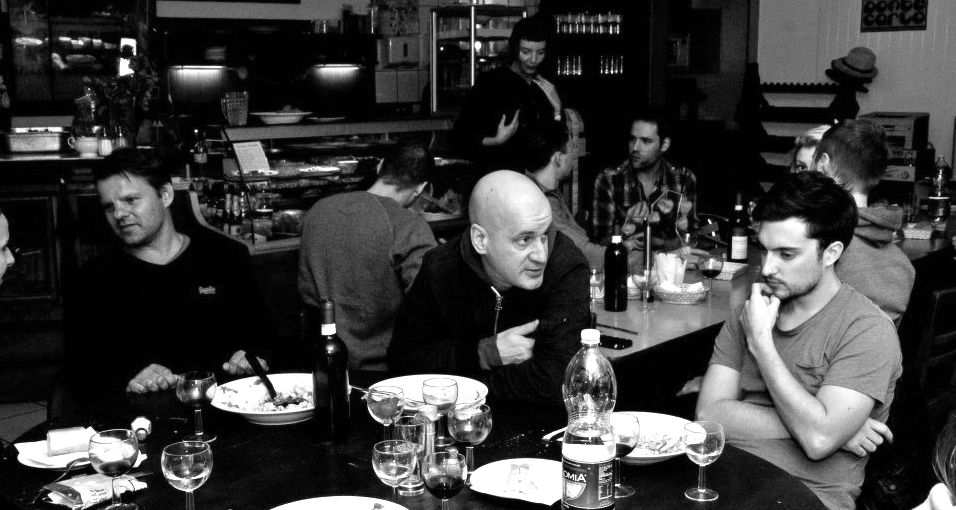
Today, she has agreed to share more details on Prologue’s history, from her perspective: “Tom got introduced to me by a friend, an artist called Chronobios, in the record shop I was often visiting in Munich. The three of us were exchanging intensively about techno and about what was missing. When I joined Prologue, we still had this energy and complicity to share ideas, with a stronger will to fulfill them. To help us out, Tom brought great artists to the label, from Modern Heads and Milton Bradley to Donato Dozzy, and the latter made a remix for my album and brought genius Mike Parker, who was already a great inspiration for me. Donato and I were talking in the same musical language. We were meeting together to mix in public or private parties, as well as with Dasha Rush. Around 2010, I discovered a new talent, totally unknown back then, who I introduced to Tom: a DJ and producer named Claudio PRC.”
It’s with a certain happiness that Cio D’Or talks about Prologue, thinking of the warm days shared with a family of close friends and unique talents. Unfortunately, the label, maybe too much on the heart side than on the business one, closed in 2015 in front of the financial challenges. Cio D’Or took a detour in the luminous dub techno genre on Telrae, before finding a new home in Svreca’s label, Semantica, where she released her groundbreaking second album all in all, deep and orchestral, followed by the memorable yocta to yotta and Fluidum III EPs. Continuing with her third album Polar Q lately, on Kynant Records, pushing one more time the boundaries of minimalism.
We extend now the portrayal with a warm, nocturnal kind of conversation, illustrating that deep music is often the creation of deep minds.
Dear Cio D’Or, do you see links between piano and electronic music?
Cio D’Or: Both musical expressions bring me closer to the minimalism I’ve been artistically pursuing throughout my musical career, from the single note to the dialogue of tones in particular. Clavier can leave all the tones and narratives to convey emotions in a very reduced way. I am currently working on a clavier album, which will include minimalistic poems, preludes, nocturnes, petites valses, fugues and repetitives. The last formin A minor or C major in particular can be integrated into a techno mix, which I did in one of my Dommune sets, as well as in other live projects. Never say that the grandiose techno crowd has no ear for classical music, as it is made of the world’s best listeners!
A repetitive, however, is very difficult to play live on the clavier without pianist studies, it can be very fast and convey a similar hypnotic character to techno. Clavier pieces belong more to the category of composition. Working with different keys is also very interesting.
When mixing electronic music via Traktor Scratch Pro, I feel more like a filter and dramaturg than a DJ during set preparation. For me, the main work in editing a DJ set is to find the optimal combination between the records and what I want to convey. Tracks from fresh ideas, even from new artists, are just as important as matching pearls from the past and putting these into a dramaturgical structure, that creates tension at best. If new records sound less qualitative than comparable ones, I prefer the older version. Nevertheless, it is important to me to open my ears to new things without forgetting the origin of the music. The same applies to the piano, I like to translate my search for the new into notes as much as into sheet music, just as much as I respect the compositions of the classical heritage and can also learn a lot from them. In the end, there is really only music for me and what I may tell, move or touch with it. The instrument or technique is ultimately just a means of expression, like a pencil in writing.
A certain melancholy emerges both from your piano and techno pieces, are you a romantic person?
CD: My music may sound melancholic because the messages I try to convey with it can also be melancholic. For example, the coronavirus pandemic was sad for many people and perhaps a turning point in their lives. I wanted to reach out to this audience through the piano album I’m working on, and still let hope ring out. Above all, I want to point out how much the small around us seems so terrific: my pieces “großimklein” (“big-small”), “imweit nah” (“In the far near”), “so lautistleise” (“so loud is quiet”) can be emotionally rediscovered. The titles were created in German language by my counterpart Heiko Redlich, who listened to the pieces very often and knows my thoughts about them. The album wants to create different moods like silence, melancholy with a twinkle in the eye, timelessness, endlessness, nevertheless with a perceptible joy of hope. I expressed these moods with a piano, because techno could not translate the emotion I perceived during the lockdown. The romance is more of a marveling at all the beauty that is right in front of us that we so often pass by.
About romanticism, it’s more of an amazement at all the beauty that is right in front of us and that we walk past. I want to pass that on for those moments when we can’t travel, like during the lockdown. My other two visual channels, photography, and video, are a refreshing change of pace from the studio work. I was asked by the wonderful José from Medellinstyle why I often use so little color in photos and videos. The answer is that textures and structures become more visible. Sometimes I find too many unclear colors in a photo, whereas there are also spectacular nuances of color. “The reduced” distracts less from “the essential”. This is similar to music. I became particularly aware of this in the Sinai desert. When a plant has grown in the middle of masses of sand, it attracts even more attention. From above in the plane, everything looks “white (desert) and blue (Red Sea)”. But when I went diving and snorkeling in the sea, I discovered a fascinating world full of colors, which were particularly intense due to the silence in the sea. Those are special moments and perspectives that I try to reproduce for the audience.
To what extent does the fascination of life inspire your music?
CD: I am as interested and inspired by the small-big in nature as I am by the big picture and what lies behind it, such as the DNA behind every living organism. DNA is non-material information, but where does it come from? How does a tree know how high and wide it should grow? How does a bird know where to fly, a fish where to swim to survive? Or let’s think of photosynthesis: amazing! Everything is finely tuned to each other. The complex form of DNA never ceases to amaze scientists, and I too am fascinated by it. There is much to marvel at: for example, the sight of a plant through a macro lens or an early morning songbird: solo or whole concerts never sound boring. In Cologne, in front of my bedroom and music studio,I listen to their singing with the window open and have been studying their language for several years so that I can now perceive who is singing or when a threat is approaching or, for example, when a blackbird wants sultanas from me. Feeding the birds on my balcony all year round gives them a better chance of survival and always gives me great pleasure and inspiration. Wild bees gratefully accept bee-friendly plants and breeding opportunities. It’s a real enrichment on our own doorstep in the midst of crazy world events.
The topic of water engaged me for the first time in a gratifying way before the obvious climate change. Diving is a profound experience: the “infinite blue” color with the feeling of weightlessness at a depth of about 30 meters fascinated me as well as the underwater silence and sounds accompanied by a color spectrum of coral reefs and fish. Listening underwater certainly sensitizes the ear in general and for me is an enriching starting point for music.
Full of fascination, I recorded several water sounds, such as falling drops on various materials, flowing rivers, waterfalls, fountains, rains, gentle lapping at the lake, as well as ocean noise, waves. I also recorded underwater soundscapes, including diving equipment sounds in the Sinai. For this, I stretched a condom over a microphone. The wind can also sound spectacular.
It is invisible, but through different matter, it becomes audible and can be felt. Today I realize how important water is: an elixir of life that is becoming scarcer all over the world: people, animals and nature are suffering and dying from the scarcity. This is exactly a point where music can also start in the very best case: First I reflect on a topic in silence before I start a project, no matter if it’s sound development, rhythms, composition, field recording, DJ mix or live preparations. Yet new ideas can also arise during my work. The biggest challenge for me is always to decide which version I will follow to completion. When a piece of music sounds finished to me, I concentrate on the mixdowns, which can make a track or composition sound completely different. Sometimes I’ve had up to fifty different versions of some pieces, and then comes the big listening session to make the final decision. That part means patience, fresh ears, and it can drag on for days, sometimes weeks, until I finalise the piece. There are also many unreleased pieces of music on my hard drive in the waiting queue. Yes, I like to share thoughts in a surreal, non-concrete way, and music is perfect for that, because it can emotionally transport something and leaves room for listeners and dancers, for their interpretations.
Does mystery transfer to who you are? Are you seeking silence to quench your expressive power, which seems to cost a lot of energy?
CD: My music is less about who I am. I often observe the zeitgeist and at best let it flow into a kind of timelessness for the listener. Personally, I discover more freedom outside of the zeitgeist where I also find silence again and again and sort out musical ideas. The zeitgeist dictates a lot to us: Every person is born into a certain time and is initially subject to this time: familial, scientific, cultural, political, musical currents, etc. So I – like every human being – am certainly also influenced by this time. I like to develop the new without losing sight of the old.
How do you filter all your ideas and decide which musical one to pursue? Are substances eventually necessary in the creative process?
CD: Filtering arises from stillness and I am matter-of-fact when it comes to continuity and a disciplined rhythm of implementing ideas. The drive to creativity happens with all the ups and downs completely without drugs: After an experiment on the subject, I found that my mixes sound best sober. I like to drink one or two prosecco on ice during a gig and have a lot of joy, because now I hear the musical preparations aloud in the interaction with the mostly wonderful audience and at best with the perfect technology, loudspeakers and a mutually matching lineup.
If you zoom out from the present and take a global view of your artistic work, how would you describe your evolution? Are you also under pressure in the face of this evolution or do you produce naturally?
CD: A difficult and interesting question! My first music productions were full of sounds! I became fascinated when a few sounds can say more than many. But that means that individual sounds have to be developed and worked on in a lively and intensive way. For me, it’s all about essence and reduction. For example, “Psst,” on Kimono, has about four basic tones. When the bassline and kick are perfectly matched in frequencies, the piece is almost finished. The path from a lot of sounds to fewer, yet more sophisticated ones, was perhaps my first big technical and artistic development.
Then, the Corona period constituted also an important step in my progression: Thanks to six scholarships received from the German Ministry of Culture, I was able to try out other musical paths and develop them further. Gigs were not possible back then and apart from them, I would not have found the time to work so intensively with the piano instrument, for instance.
I admire J.S. Bach just as much as I admire some techno artists or sound developers in a different way. The combination of electronic music with orchestral elements is part of my progression and can be sensed in Polar Q. I was sometimes bored of the repetitive beats of purely electronic devices and wanted to breathe a touch of “soul” into techno in a subtle, elegant way. This is very difficult and I would also like to be able to perform with real instruments and electronic music together, yet there still have to be various rehearsals for this.
The wonderful Hüseyin Evirgen—formerly part of Cassegrain and now Magna Pia alone—introduced me to a piece of theatre music that mixes electronic music and instruments. The work was very exciting because it had to tell a true story fictitiously. This step gave me new impulses for the artistic as well as the technical development. I also composed three pieces for a cinema film alongside my performances. The development never stops. If I stopped developing, I would probably feel dead in the middle of life.
Maybe there is some kind of expectation from my listeners, but letting myself be guided by it would block any developments and hardly anything new could emerge: I do observe the zeitgeist and what is flooding the techno market, but I prefer to follow my heart and what I think could enrich the listeners at best than external expectations. On the subject of pressure, I was also impressed by a quote from Rick Warren: “If you ever follow the crowd, you might get lost in it.” I find it exciting when people don’t bend for the sake of success and money and try to create their own paths. Of course, we also need money in this world, for a bed, food and music equipment, but I find it more refreshing for the scene to develop new ways of producing techno. If everyone played the same music over and over to fit the zeitgeist, it would get boring in the clubs.
Allow us to end this interview on a transcendental note: what does spirituality mean to you in music?
CD: Music is non-material information that becomes audible by means of matter—the equipment. Music is created by life.
AI, for example, makes exclusive use of “information coming from different living originators,” unable to totally mimic the human ability to create, which carries a unique DNA within itself. Matter is the effect of an idea and information. For instance, a house is built from the blueprint—the information—of an architect. The same applies to fine arts as well as to daily objects such as chairs, cupboards, bicycles and else. If I were to say now: “The greatest art—namely nature—however, came into being by accident,” I would find myself rather arrogant. I love science, but it is not my highest instance to answer all my questions on life and nature. God is not subject to this time and is also not an object of this world: we cannot put him under a microscope or see him in the universe. His existence cannot be proven with our means, just as it is not possible to exclude his existence. A visual artist cannot be found in his own painting either.
My belief is like diving into a mystery, and the longer I dive, the more I am allowed to recognize and yet never unravel everything, unlike a riddle that can be solved at some point. Even if I have not yet found all the answers to my questions: faith is a gift that can be found and that can impact a life. Until you find this treasure, you don’t necessarily know that it exists. It is similar to love, which shall be distinguished between “Eros” (passion), “friendship or family love” and “Agape,” the unconditional divine love. Regarding the latter, belief, a more personal everyday relationship, gives me total acceptance, and from this comes vitality, trust, comfort, courage, liberty, correction, relief through forgiveness, transformation and healing. From the morning silence and contemplation also arises the question: What can I do today with my humanly limited possibilities, regarding people and music?
So I am more like a filter and a servant of the music and its listeners, and above all, a normal person—neither better nor worse—but like every human being unique.
